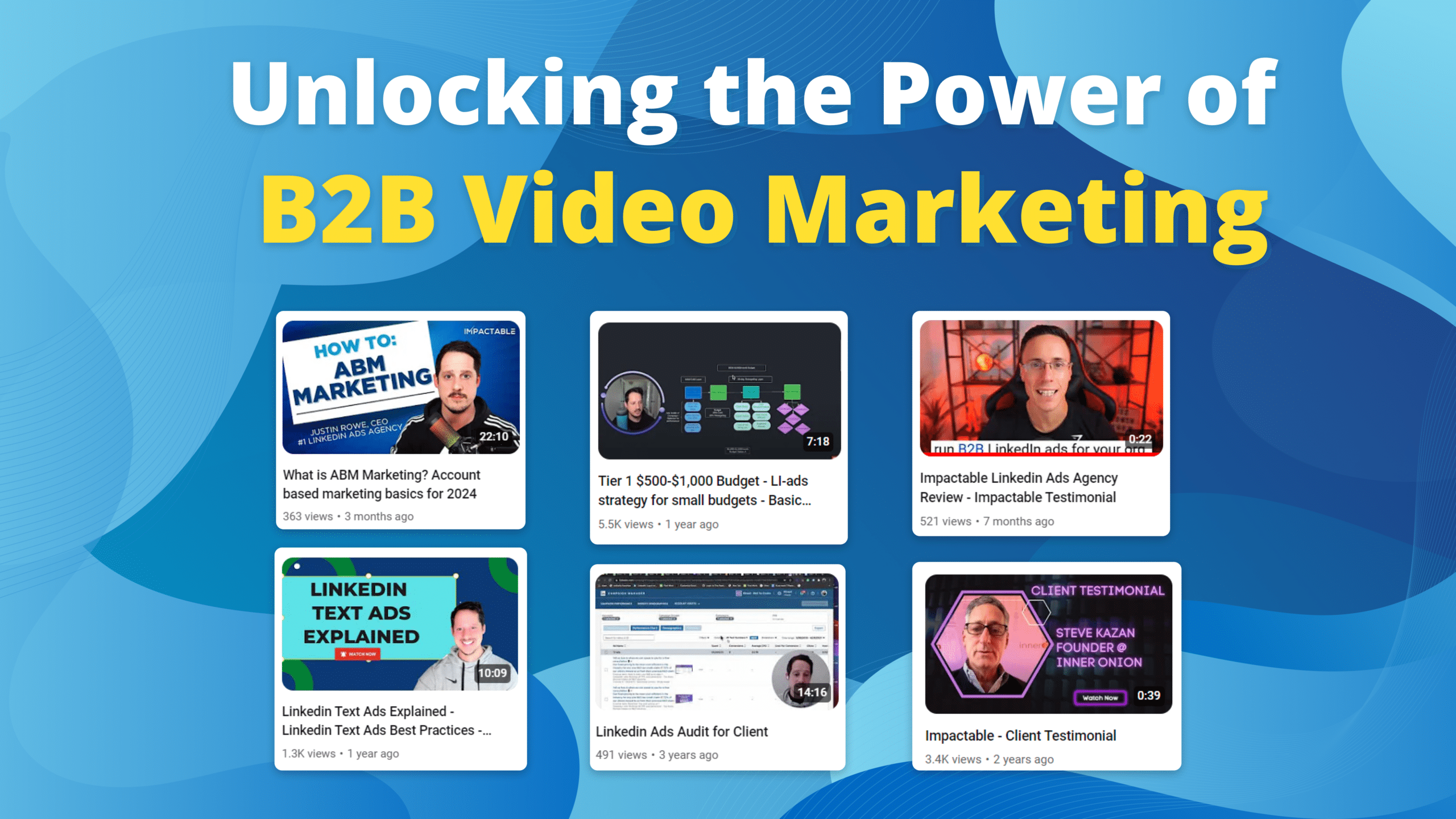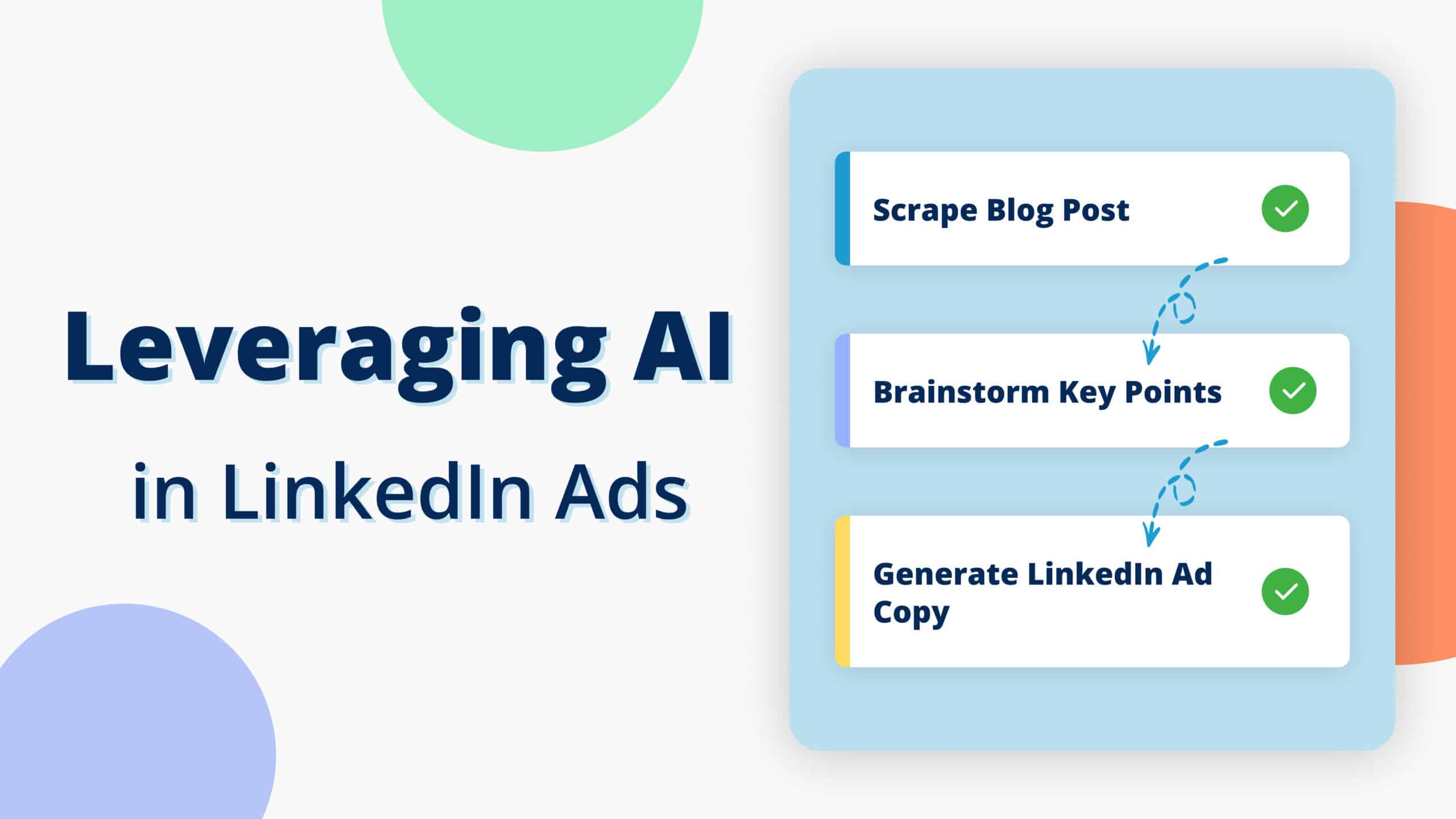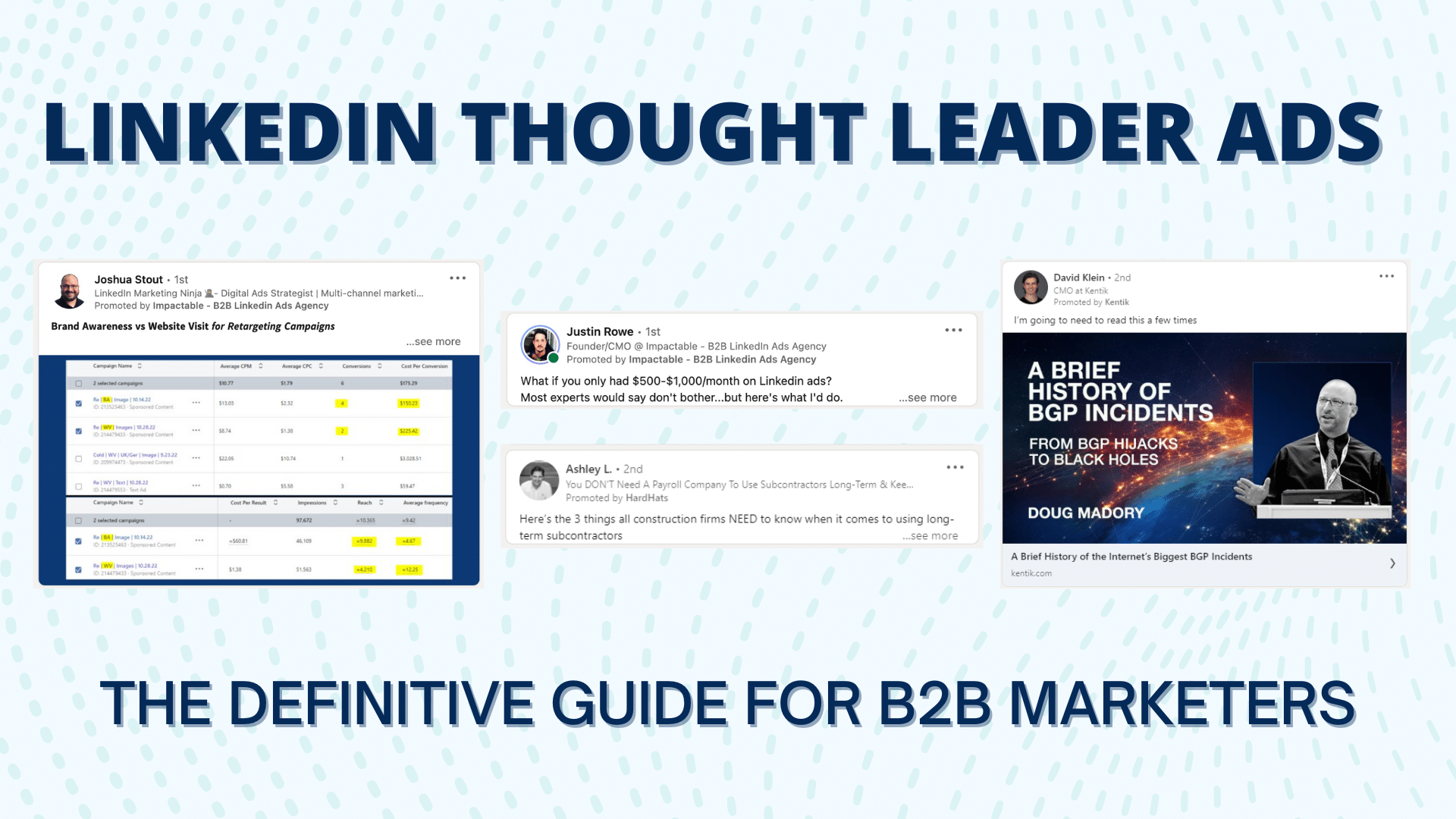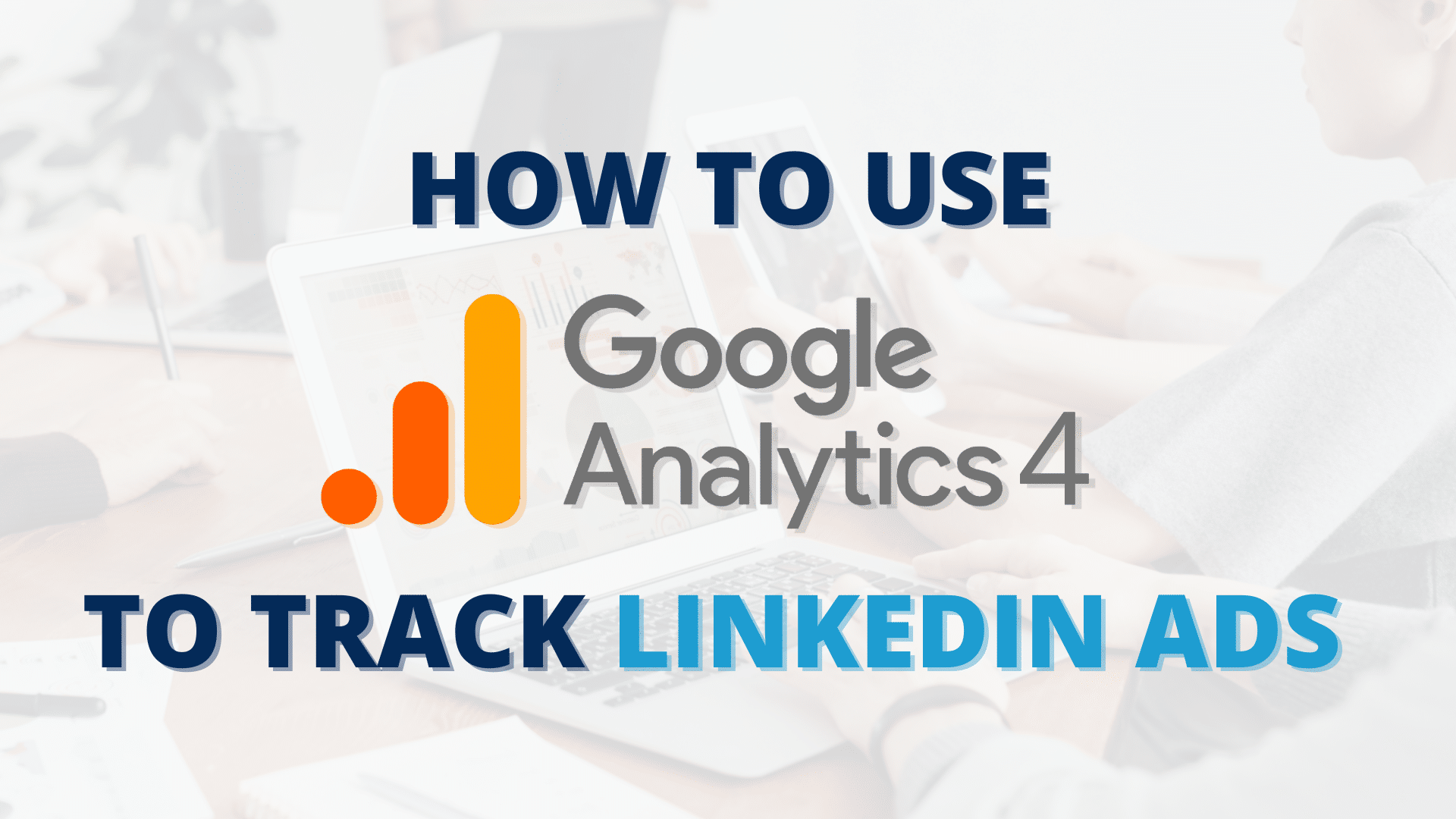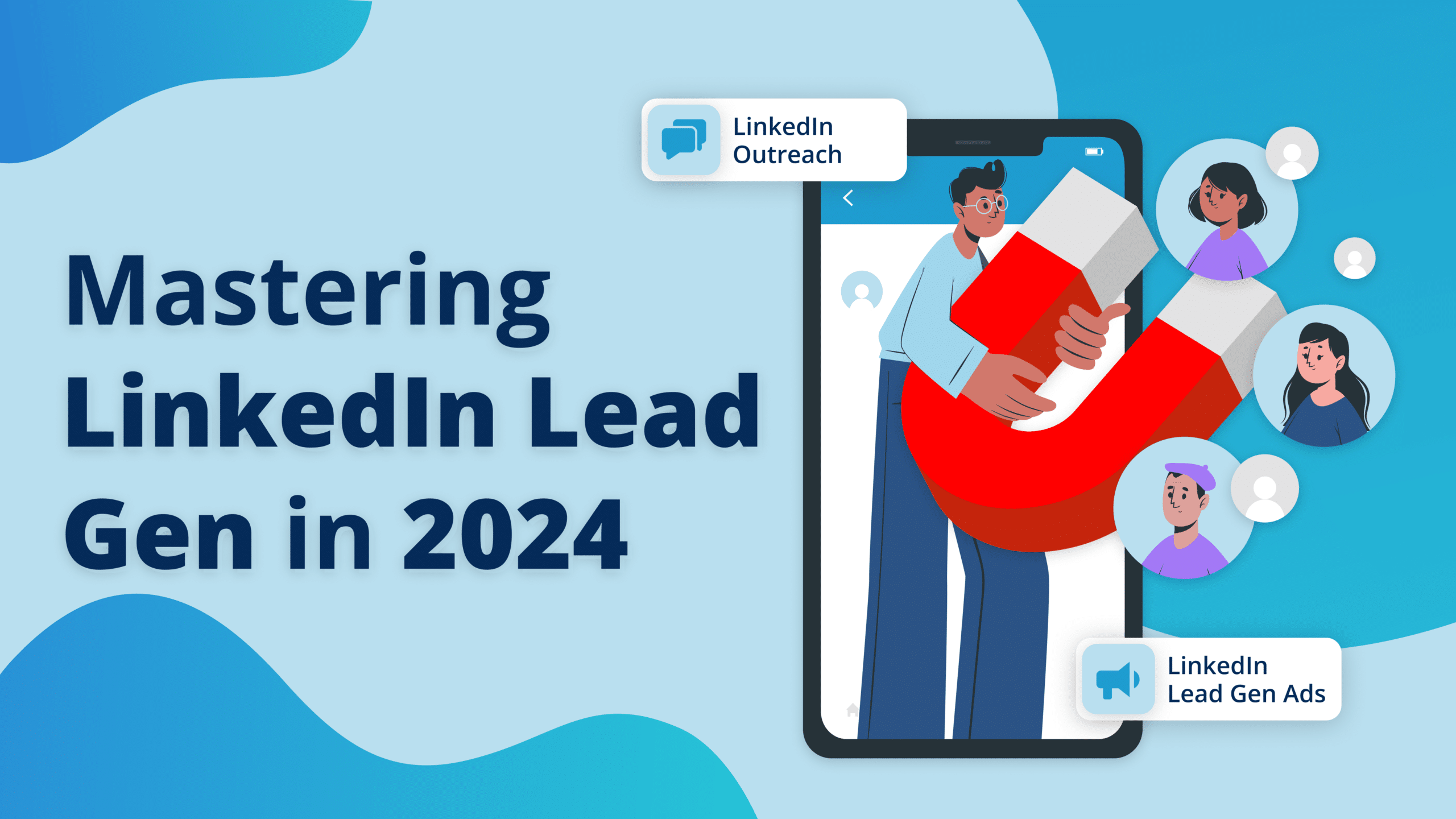What is Account-Based Marketing (ABM)?
Account-based marketing (ABM) is a strategic approach that focuses marketing and sales efforts on a clearly defined list of target accounts. Rather than casting a wide net to reach many potential customers, ABM narrows the focus to penetrate targeted accounts with personalized, highly relevant messaging and offers.
ABM typically concentrates on high-value, strategic accounts that represent a major potential revenue opportunity. These target accounts are identified through market research, past customer profiles, ideal customer criteria, and other factors to determine the accounts with the highest potential. Accounts are selected based on potential deal size, likelihood of closing, alignment with the provider’s solutions, and other attributes. More on Linkedin targeting options found here.
The goal of ABM is to lay the groundwork for sales opportunities within target accounts by tailoring messaging specifically for key stakeholders within each account. This could include customized emails, landing pages, digital ads, direct mail, and other touches designed to resonate with each target account. ABM initiatives are highly coordinated between marketing and sales to penetrate each key account effectively.
Because ABM is focused on a small, well-defined list of accounts, it allows for a much higher degree of personalization than broad-based marketing efforts. The message, offers, and positioning can all be fine-tuned to align with what is most relevant to each target account. This one-to-one approach enables a higher level of penetration within key strategic accounts.
Why Use an ABM Strategy?
An account-based marketing (ABM) strategy offers a highly focused approach to reach and build relationships with your most valued target accounts. While traditional outbound marketing spreads your messaging broadly across many prospects and leads, ABM concentrates your marketing efforts on a select list of target accounts that offer the highest potential value.
This tighter focus allows you to tailor and personalize your messaging specifically for each target account. When you customize content with relevant insights, case studies, and messaging aligned to each account’s needs, you demonstrate that you truly understand their business and can provide real value. This level of personalization helps you stand out from other vendors competing for the account’s attention.
Additionally, concentrating resources on best-fit accounts enables you to nurture these relationships over time through coordinated marketing and sales efforts. By saturating target accounts with relevant messaging across multiple channels, you increase mindshare and build credibility with key decision makers.
An ABM strategy leads to higher return on investment because you focus budget and staff hours on accounts more likely to become high-value customers. Even though the target account list may be small, the lifetime value of winning one of these accounts is worth the extra effort. According to ITSMA research, ABM initiatives generate over 2x more revenue compared to traditional marketing.
Creating an ABM Target Account List
The first step in executing an ABM strategy is identifying your target accounts. This is one of the most important pieces – you want to ensure you are selecting accounts that are a good fit for your solution, and that have potential for a high lifetime value. Here are some best practices for creating your ABM target account list:
Determine Target Account Criteria
Start by defining the criteria for your ideal customer profile (ICP). Common factors to consider include:
-
- Company size (employee count or revenue range)
-
- Industry vertical or sub-vertical
-
- Technology used or systems in place
-
- Geographic region
-
- Current solutions or vendors used
Focus on accounts that align with your company’s ideal customer and that you can provide value to. Avoid casting too wide of a net across industries or company sizes.
Target 50-100 Accounts To Start
When first launching an ABM program, it’s recommended to begin with 50-100 target accounts. This allows you to provide focused, personalized attention to each one. As your ABM process matures, you can expand to several hundred accounts.
Leverage Firmographic Data
Firmographic data on company size, revenue, industry codes, and technology used provides the demographic info needed to identify target accounts. Sources include:
-
- LinkedIn Sales Navigator – access to firmographic filters and lead recommendations
-
- Third-party predictive scoring tools like 6sense
-
- Purchased data sets from vendors like ZoomInfo or Dun & Bradstreet
Study your current customer base to find common firmographic traits. Seek out similar companies that fit this profile.
Compile Account Lists
Bring together target accounts from your CRM, recent outbound campaigns, firmographic research, and other sources into a master ABM list. Continuously expand and cultivate this list over time.
Appropriately scoping your target account list and applying relevant selection criteria is key to ABM success. Following best practices here will focus your efforts on the accounts most likely to convert and allow for tailored outreach.
Reaching Target Accounts on LinkedIn
LinkedIn provides a number of powerful options for targeting your ABM accounts directly. Here are some of the main methods:
Company Targeting
You can directly target the companies in your ABM account list by searching for and selecting them under LinkedIn’s Company targeting option. This allows you to reach employees at those specific companies. For larger companies, you may want to add additional targeting criteria to reach only certain roles, seniority levels, locations, etc.
Matched Audiences and Contact List Uploads
Most ABM strategies involve creating account lists and contact lists in external tools. You can upload these lists directly to LinkedIn campaigns under Matched Audiences. This allows you to target your externally developed account and contact lists.
Website Retargeting
You can create custom audiences in LinkedIn for anyone who has visited your website or certain pages. This website retargeting can be a powerful tool for remarketing to your target accounts. You can segment website visitors from your ABM accounts and serve them customized messaging.
Lookalike Audiences
LinkedIn allows you to create “lookalike” audiences that match the characteristics of your target accounts or ideal customers. This can help expand your reach to new accounts that resemble your existing targets. However, lookalike audience quality is not always reliable, so these should be used to complement your other targeting.
Overall, LinkedIn provides the ability to directly target the accounts you want to focus on for ABM campaigns. Features like direct company search, contact list uploads, and website retargeting give you precision in reaching your ideal businesses.
Targeting the Right People Within Accounts
With an ABM approach, it’s important to go beyond just targeting decision makers at your accounts. You’ll also want to reach influencers and team members who can impact the buying decision. Audience tuning can help improve results.
Some tips for targeting the right individuals within your accounts on LinkedIn:
-
- Don’t just focus on high-level executives. Also reach directors, managers, and IC’s who may be users or part of the buying team.
-
- Look at targeting by job function. Identify roles like operations, marketing, sales, HR, etc. that may interact with your product.
-
- Use seniority level targeting. Aim for decision makers but also reach manager levels who influence.
-
- Target by groups and interests. See what groups your accounts’ employees are in on LinkedIn. Target based on relevant interests.
-
- Personalize for each account. Study the org chart and build custom targeting for the key roles and levels at each company.
-
- Look for cross-over from current clients. See if contacts at your dream accounts used to work at a current customer.
By expanding your targeting within accounts to include a wider range of roles and responsibilities, you can increase awareness, engagement, and advocacy across the buying committee. Just targeting a few executives leaves huge blindspots – so penetrate accounts more broadly.
Customizing Messaging for Each Account
One of the most powerful tactics in an ABM strategy is customizing your marketing messages for each target account. This allows you to tailor your messaging specifically to each company to increase relevance and engagement. Here are some ways to customize messaging in an ABM campaign:
Personalized Display Ads for Each Target Account
-
- Create unique display ads featuring the target company’s name, industry, location, etc.
-
- Highlight your expertise in their specific field or niche.
-
- Showcase case studies and testimonials from similar companies.
-
- Drive traffic to a landing page customized for that account.
Custom Landing Pages for Each Account
-
- Develop landing pages that speak directly to the target company.
-
- Include relevant case studies, testimonials, and proof points that matter to them.
-
- Make sure the page reinforces why you understand their needs better than competitors.
Targeted Email Campaigns
-
- Segment your email lists to send customized campaigns to each target account.
-
- Personalize every aspect of the email including subject line, preheader, body content.
-
- Focus on their industry-specific pain points and how you solve them.
-
- Provide educational, insightful content tailored to their role and interests.
By taking the time to customize your messaging for each account, you can deliver a highly relevant experience that feels aligned to their exact needs and preferences. This tailored approach is the cornerstone of an effective ABM strategy.
Measuring ABM Campaign Success
With account-based marketing, metrics beyond just conversions are important to track, as the goal is longer-term brand awareness and relationship building.
At the account level, engage with metrics that show how your target accounts are interacting over time. This includes:
-
- Impressions and reach within the account
-
- Clicks, CTRs, and other engagement metrics
-
- Content views, downloads, and consumption
-
- Form fills and sales inquiries
These metrics indicate that your ads are resonating and sparking interest within the account. While they may not directly lead to an immediate sale, they build brand awareness and relationships for future opportunities. Ensure you are using LinkedIn ads best practices.
You can also track conversion metrics at the account level. For example, how many target accounts held sales calls or demos with you after being exposed to campaigns. Or how many engaged with specific nurture content you created for them.
At the individual level, do track metrics like impressions, clicks, and conversions as normal. But remember that individual performance may vary, while your goal is impact at the account level. So focus on rolling up metrics to see overall account health and engagement.
With ABM ad campaigns, take a longer-term view on metrics beyond short-term conversions. Building relationships with target accounts takes time, so track engagement over months or quarters. And optimize campaigns to increase reach and resonance within accounts, opening doors for future sales.
Integrating ABM Into Your Current Strategy
Account-based marketing (ABM) should not replace your overall marketing strategy, but rather complement and enhance it. Here are some tips for successfully integrating ABM into your current efforts:
-
- Start small and focus ABM on your most strategic target accounts. You don’t need to take an all-or-nothing approach. Test ABM with a small number of target accounts and build from there.
-
- Make ABM part of your marketing mix. Use other tactics like content marketing, events, etc. to attract and engage your broad audience. Use ABM for laser-targeted outreach to your VIP accounts.
-
- Be patient. It takes time to research target accounts, customize messaging, and build relationships. Expect an extended sales cycle compared to transactional leads.
-
- Focus on quality over quantity. ABM is about deep account penetration versus wide reach. Don’t expect huge lead volumes, but higher conversion rates on valuable accounts.
-
- Develop processes to identify new target accounts over time. As your business grows, you’ll want to expand your ABM efforts. Build in ways to continuously add qualified accounts to your target list.
-
- Automate what you can. Look for ways to scale personalized outreach through account-based advertising, customized nurture streams, profile monitoring and more.
-
- Align your team and processes. Make sure sales and marketing are on the same page. Develop defined workflows for engaging target accounts.
-
- Monitor results closely. Analyze conversion rates, account engagement, sales cycle impacts and more. Continuously refine your ideal customer profile and ABM approach.
ABM represents a major shift in marketing strategy that requires commitment, patience and alignment. By starting small, integrating it into your existing efforts, and scaling it thoughtfully over time, you can make ABM a highly targeted growth driver.
Challenges and Pitfalls to Avoid
When implementing an ABM strategy, there are a few key challenges and pitfalls to be aware of:
-
- Very narrow targeting can limit reach – With ABM, you are inherently targeting a small, niche audience. While this allows for highly customized messaging, it also means you may struggle to reach enough of your targets frequently enough to make an impact. Avoid being too restrictive with your target account list and persona targeting.
-
- Siloed conversion tracking – Many companies only track conversions on specific landing pages or from specific campaigns. However, leads often convert on other pages or from other channels. Make sure to implement cross-channel tracking so you don’t miss out on conversions.
-
- Assuming one channel will convert all accounts – While LinkedIn ads can be highly effective for ABM, relying solely on ads can cause you to miss out on conversions. Take an omni-channel approach combining ads, content, email, events, etc. Different accounts may be receptive to different channels.
-
- Not personalizing messaging – With a limited target list, you have the opportunity to customize messaging specifically for each account. Avoid wasting this potential by blasting the same generic ads to every account. Tailor messaging with company names, logos, and relevant use cases.
-
- No strategy beyond initial outreach – Just getting an initial click or meeting with an ABM target account isn’t enough. Have an extended nurture and follow-up strategy prepared to continue engaging accounts post click to help drive conversions.
To avoid these pitfalls, take an expansive approach to targeting, conversion tracking, channels, and messaging personalization. Most importantly, don’t treat ABM as a one-and-done effort, but rather as an ongoing strategy requiring continued optimization over time.
Key Takeaways and Success Factors for ABM
Account-based marketing (ABM) requires a strategic, targeted approach but can yield tremendous returns on marketing investment. Here are the key takeaways for implementing ABM successfully:
-
- Focus on high-value, high-potential target accounts rather than casting a wide net. Carefully research and select accounts that are a strong fit for your solution.
-
- Leverage LinkedIn’s depth of company data to identify and target key decision makers within your accounts. Use native filters to penetrate accounts more deeply.
-
- Create customized messaging and campaigns for each target account when possible, using relevant brand names and contacts. Personalization boosts engagement.
-
- Measure success based on pipeline and revenue goals from target accounts, not vanity metrics like clicks or impressions. Focus on moving target accounts through the funnel.
-
- Integrate ABM with your existing inbound and outbound strategies. ABM is not a standalone approach but part of an omnichannel strategy.
-
- Avoid overly restrictive conversion tracking. Track all relevant actions the account could take, not just visits to a designated ABM landing page.
-
- Maintain realistic expectations around the number of target accounts and required campaign spend and duration. Plan and budget accordingly.
An effective ABM strategy requires upfront research and ongoing optimization, but successfully moving high-value target accounts through your sales funnel can significantly accelerate revenue growth. With a targeted, omnichannel approach focused on quality over quantity, ABM delivers a strategic edge for B2B marketing and sales. And of course if you need a Linkedin Ads Agency, Impactable isn’t too shabby : )



